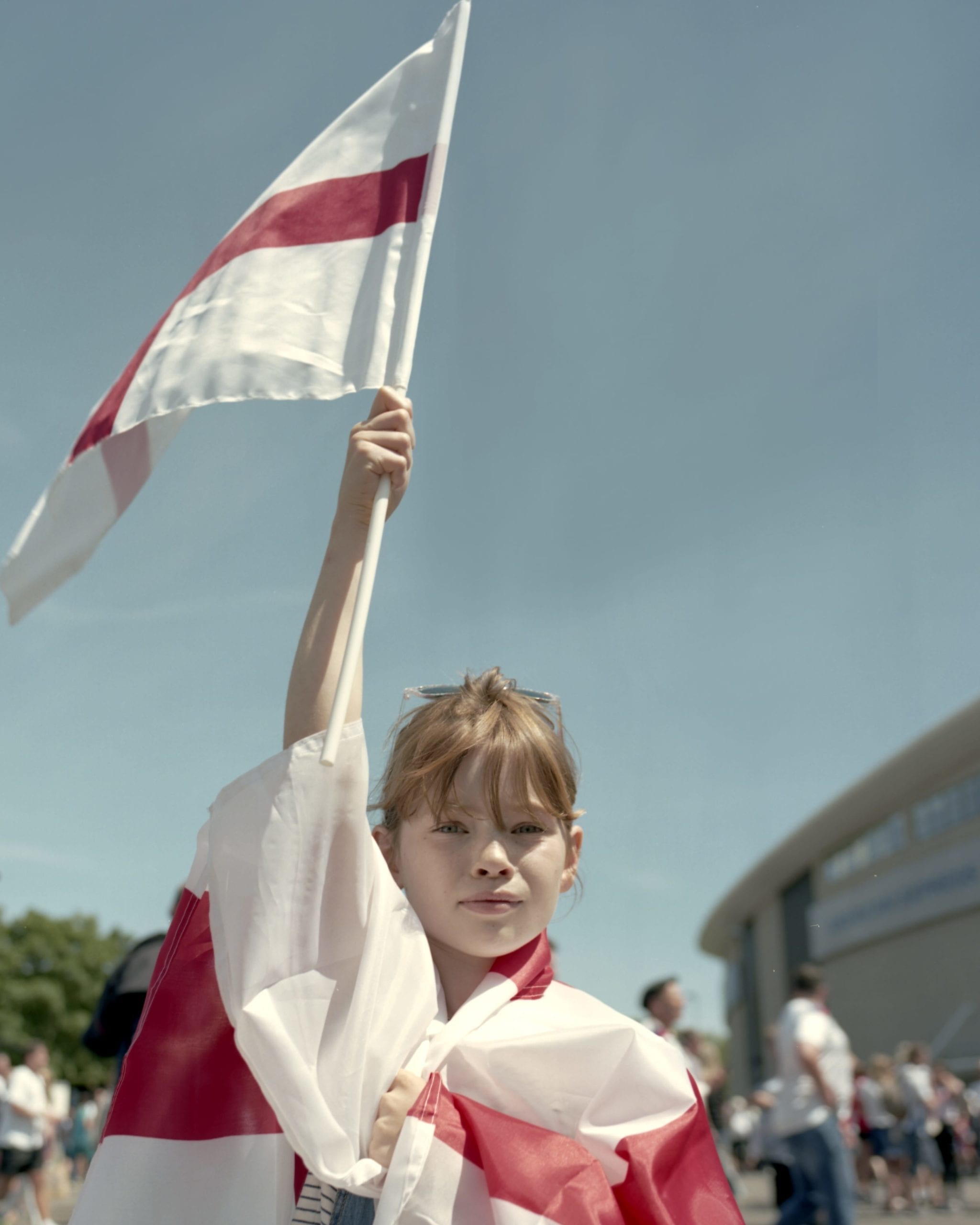Alice Mann was selected for the adidas Breaking Barriers commission. Organised by Studio 1854 in collaboration with adidas, the project awarded Mann £10,000 to create a new body of work. Below, a handful of the players who Mann photographed reflect on the personal importance of football, together with the challenges that come with playing a sport often associated with men.
The 2019 Women’s World Cup felt remarkably different to previous iterations. In the UK, the BBC committed to broadcasting every game on national television. Broadcasters around the world followed suit. Almost 59 million people watched Brazil play France, making it the most viewed women’s football match of all time. In the UK, audience figures totalled 28.1 million, amounting to 47 per cent of the television-watching UK population, while, in Holland, 88 per cent of Dutch television viewers watched the final. This was the country’s largest television audience since the men’s World Cup semi-final in 2014.
The impact of this should not be underestimated. With such a presence in the media, women’s football entered the mainstream. The tournament became a topic of everyday conversation and even for those who did not actively follow the fixtures and results, most, in the UK at least, were aware that the matches were taking place. However, there is still a long way to go – Fifa, for example, awarded 30m dollars to the competing teams in the women’s tournament; comparatively the teams in last year’s Men’s World Cup received 400 million dollars. But, the increased public interest in, and media coverage of, women’s football is encouraging.
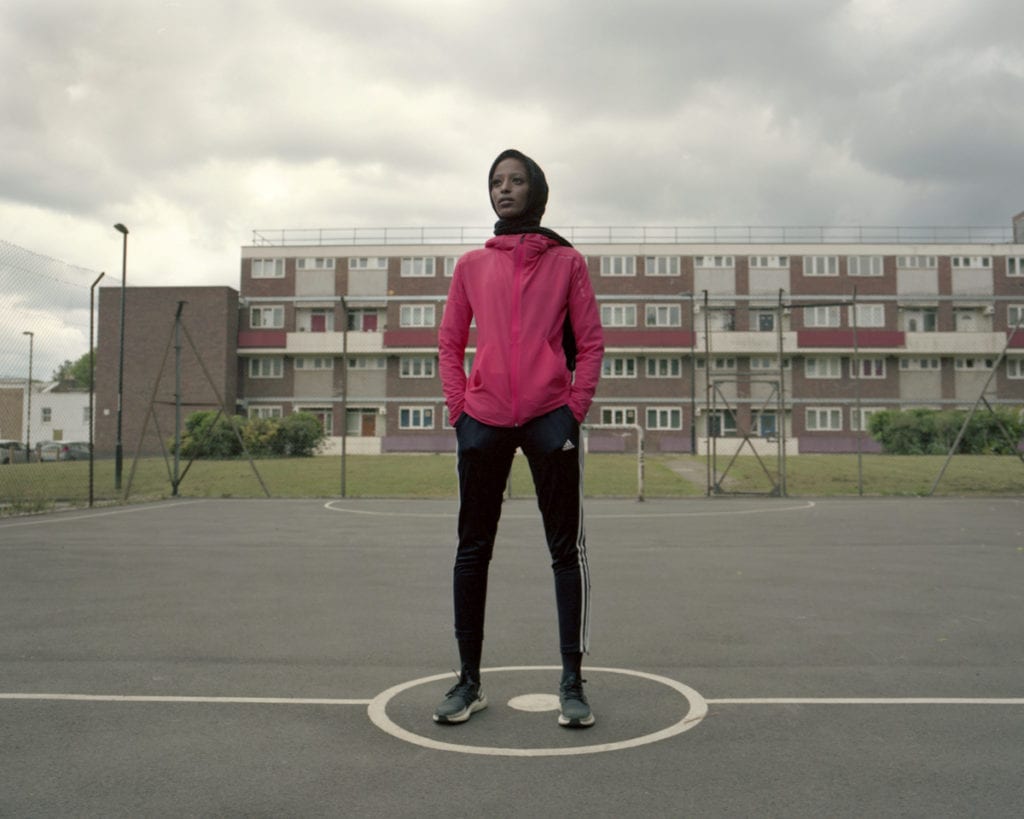
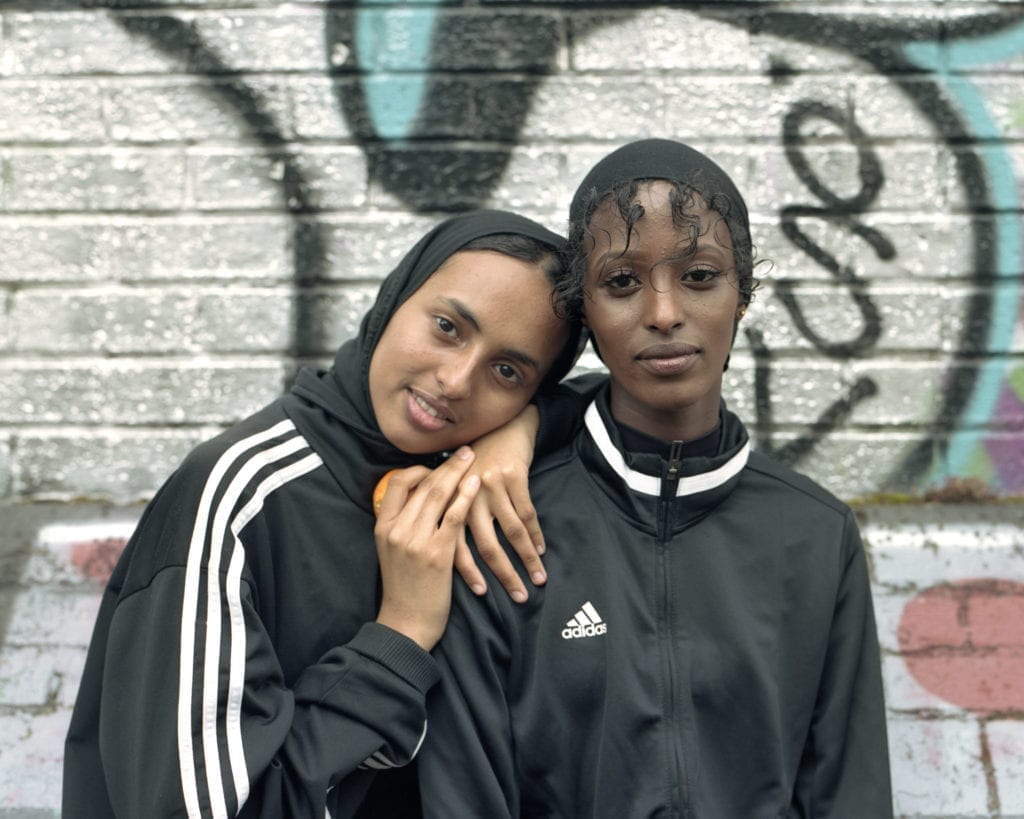
“Images can have such a vital role to play in the way we understand the world,” says Mann, the award-winning photographer who documented four grassroots women’s football teams over two weeks. “If you hear or see something enough then you start to believe that it’s possible. And likewise, if something is missing it is difficult for you to believe that you could be a part of it.” In an interview with the podcast Football Daily, Emma Hayes, manager of Chelsea F.C. Women, echoed this sentiment, commenting on the wider significance of the 2019 World Cup. Both England’s performance during the tournament, and the public interest it sparked, have, she said, ensured a “sizeable shift” in the perception of women’s football.
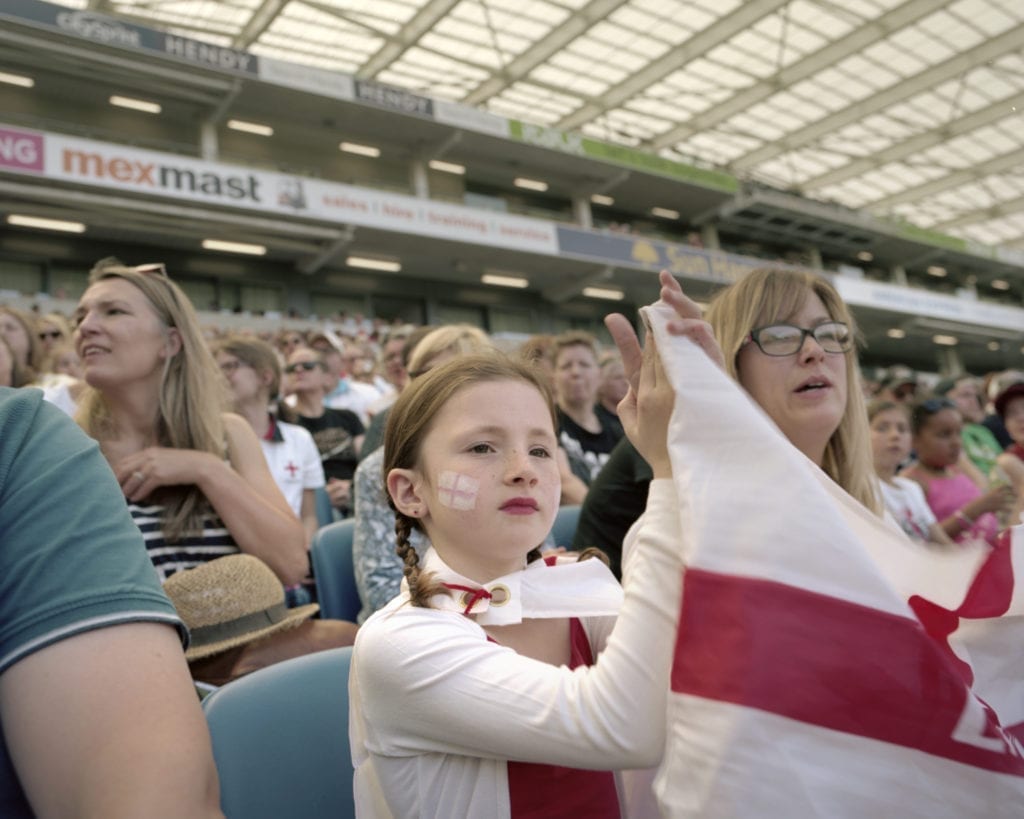
“Women’s football is growing at a rapid rate,” says Hannah, a 21-year-old footballer from Brighton, who plays on the Goldsmiths University women’s team. ”I went to the FA Cup final in May – it was incredible to see Wembley that full for a women’s football match. If 10-year-old me could have seen that, it would have blown my mind.”
That said, almost 100 years ago, in 1920, UK public interest in women’s football was growing. After a winning streak, Dick, Kerr Ladies F.C. — one of the earliest known women’s association teams in England — amassed a large and loyal following. A Boxing Day match at Goodison Park, Liverpool, attracted a crowd of 53,000. At the time, this was unprecedented. This momentum was, however, short-lived. In 1921, the FA banned women’s football: “Council felt impelled to express the strong opinion that the game of football is quite unsuitable for females and should not be encouraged,” it concluded. The ban was not lifted until 50 years later and, today, women’s football is still suffering from the after-effects.
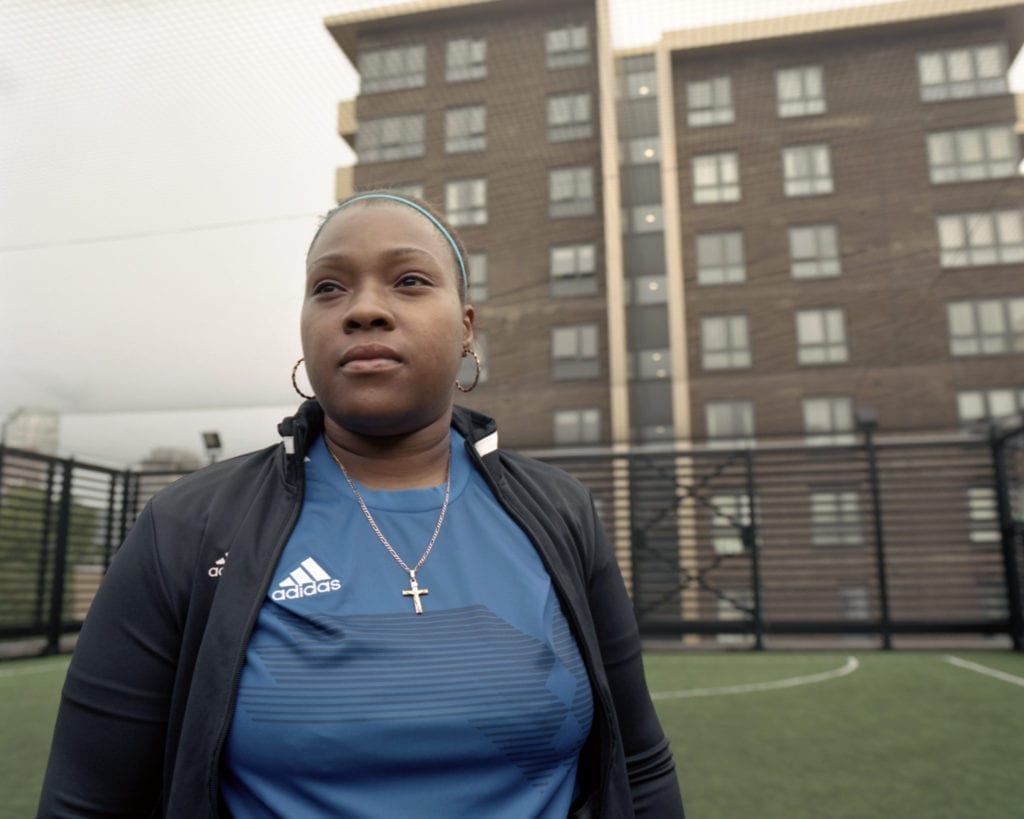
“I am not the biggest fan of making any sort of comparisons between men and women when it comes to sport,” says Viv, founder of East London Ladies F.C., a community-based, mixed ability team who Mann photographed as part of the commission. “On many occasions, they are both on different ends of the spectrum, in terms of coverage, funding, money, wage, accessibility, and resources. It is almost unfair to compare.”
Lauren – a 24-year-old education officer from Camden, and one of the women that Mann photographed – started playing football in primary school. “My family are all from north London so we’re massive Arsenal fans,” she says. At primary school Lauren would play football every day: “I was captain of the boy’s team and all that stuff – there isn’t so much of a gender divide at that age.”
Today, as a member of Goldsmiths Women’s Football, Lauren regularly plays, but this has not always been the case. “I fell out of it to be honest,” she says. Up until the age of 13 I would play at lunch on the school field but all of a sudden the boys started getting hostile at the idea of a girl playing football with them. I would go in for a tackle and they would verbally attack me. It was uncomfortable. I loved other sports and playing hockey and netball was just easier.” It was not until Lauren started studying at university, aged 22, that she began playing football again. “It was my reintroduction,” she says. “I was immediately welcomed into the community.”
The women’s football team at Goldsmiths University is committed to creating an inclusive and supportive environment for its players. There are no trials: every willing female-identifying person is welcome and encouraged. “It is stated explicitly and emphatically: it doesn’t matter if you have kicked a ball a thousand times or just the one time,” says Lauren. “It is a space for everyone.”
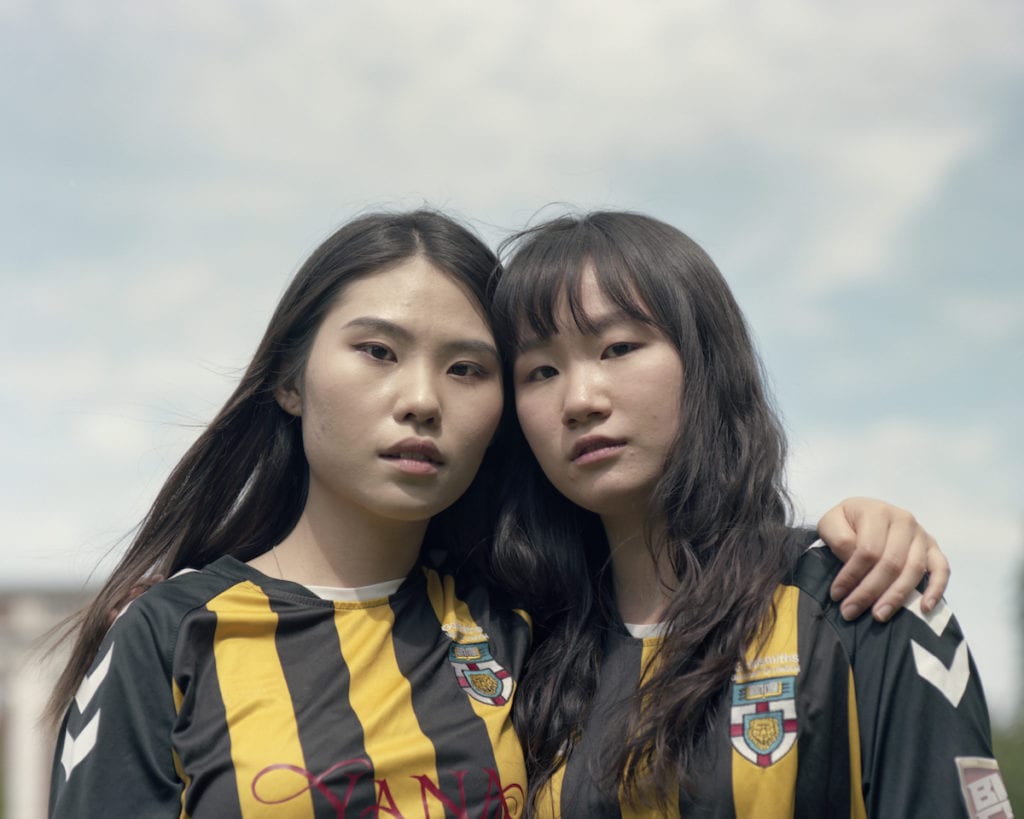
Creating a safe space for its players is prioritised above everything else. “We expect absolute tolerance and respect for everyone’s identity,” says Lauren. “It’s about appreciating when you come into the team that everyone is equal and equally considered.” East London Ladies has a similar ethos: “We have to be very mindful about the space we create in terms of players feeling comfortable, safe and able to express themselves,” says Viv.
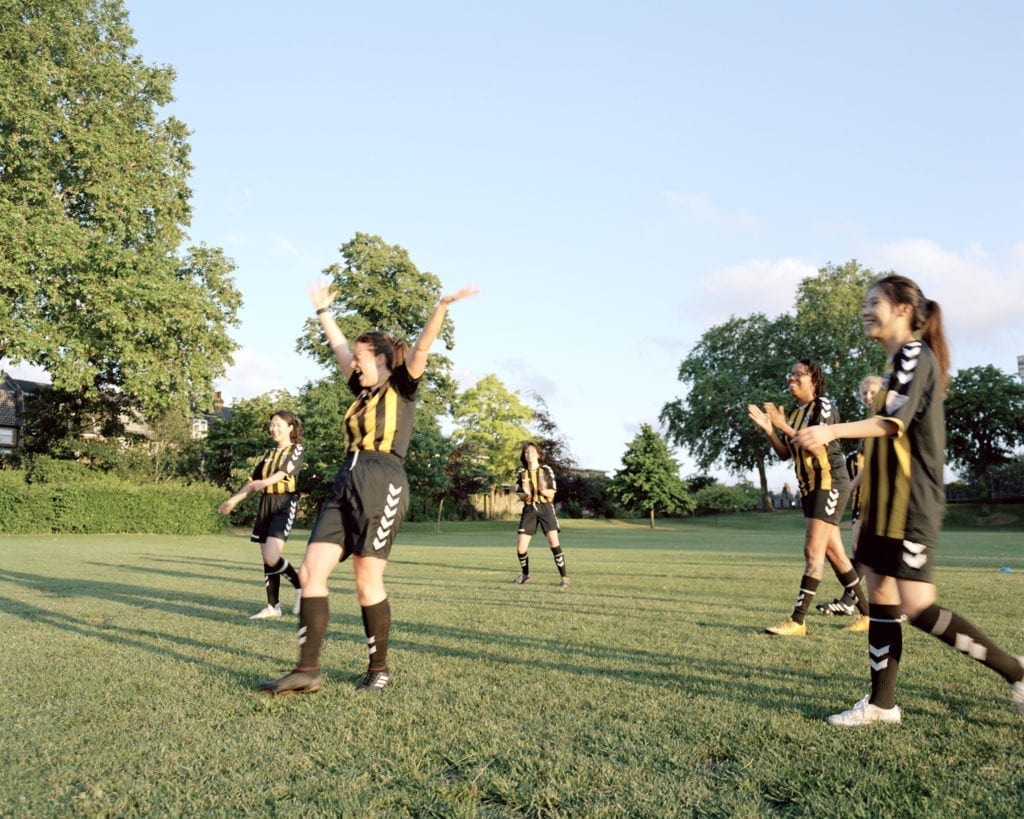
Both Goldsmiths Women’s Football and East London Ladies believe in the power of encouragement and teaching self-belief. “My responsibility is to send a message that you can, you will and you must,” says Viv. “When I say you must, if somebody tries to put you down, you must say what time it is.” A lack of self-belief is something that Lauren has noticed as a recurring trait in new players. “At Goldsmiths, when we have the first trial of the year every single person who does something ‘wrong’ will continuously apologise for perceived mistakes. They also apologise for the space they are taking up.” Lauren believes that this is a result of a society that for decades has asserted football as an almost-exclusively male sport. With the increased visibility of the 2019 Women’s World Cup, the hope is that this will change.
But is sport political? In the sense that the football team creates a space for women in which individuals can feel safe and supported, it is. But for many, the game offers an escape – people play football simply for its physicality and their love of the sport. But, perhaps, the two are one and the same: “I don’t agree with the idea that anything is apolitical,” says Lauren. “The fact that this space [within Goldsmiths Women’s Football] exists in the history of women’s football is political.”
Once more, “The power of what these teams do for people on an individual level is powerful and far reaching. That sort of power is underestimated.”
–
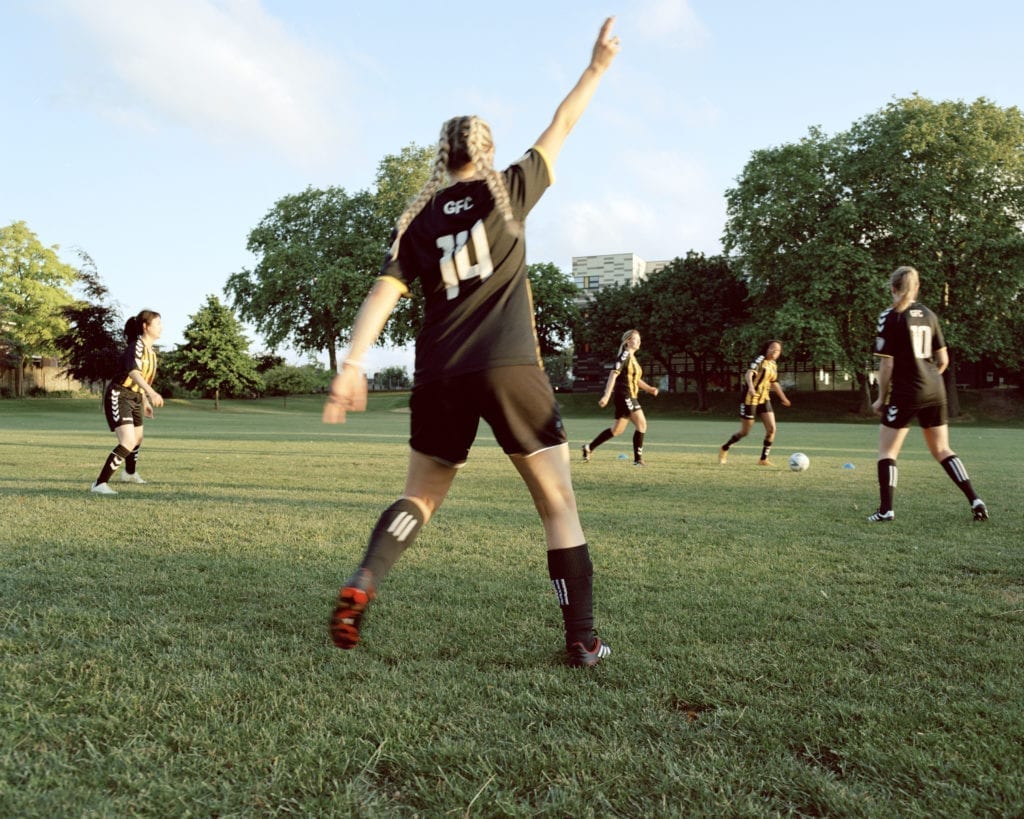
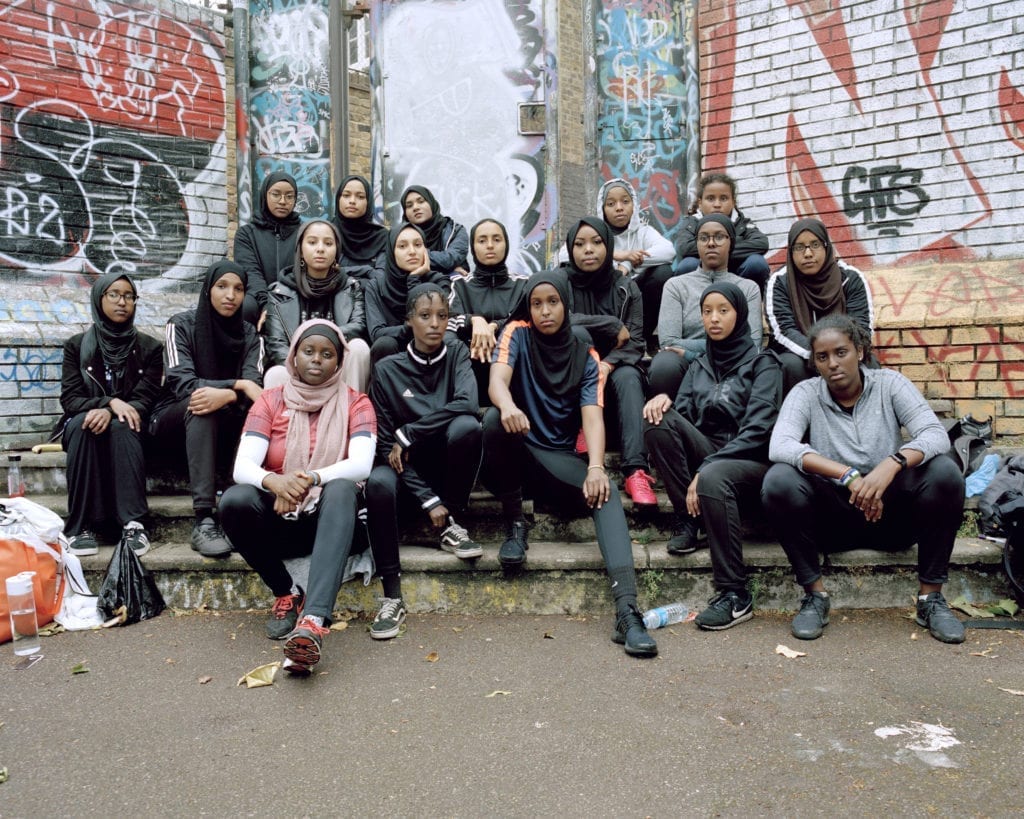
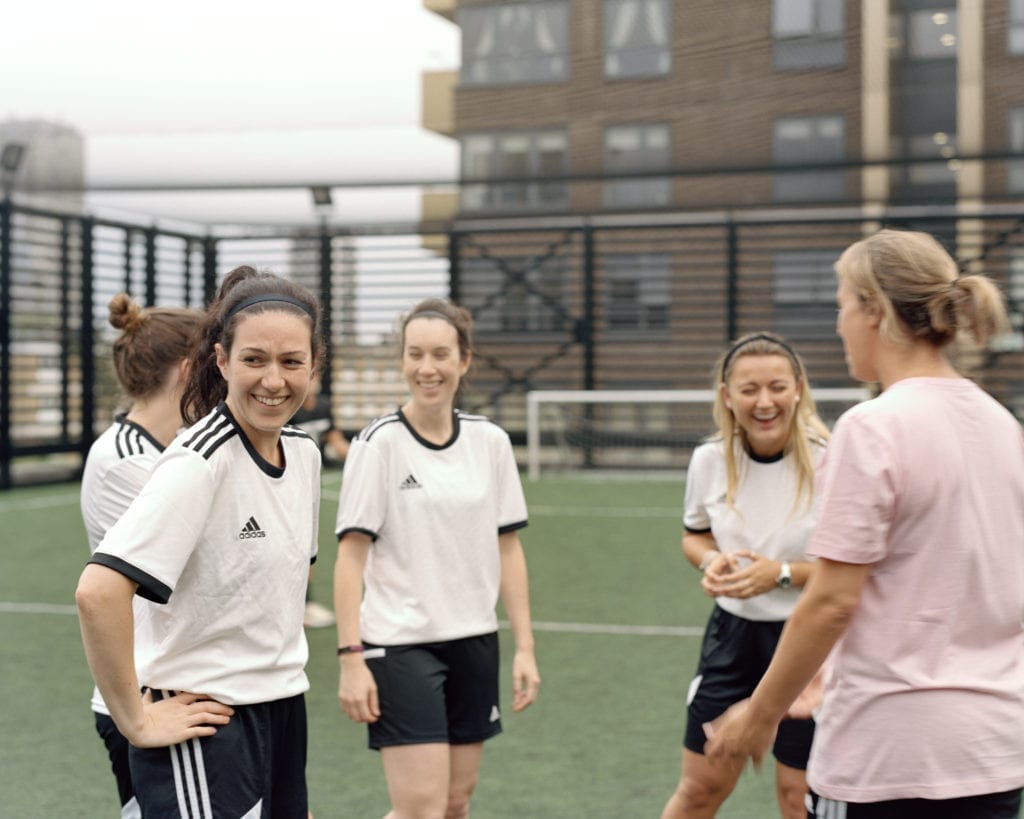
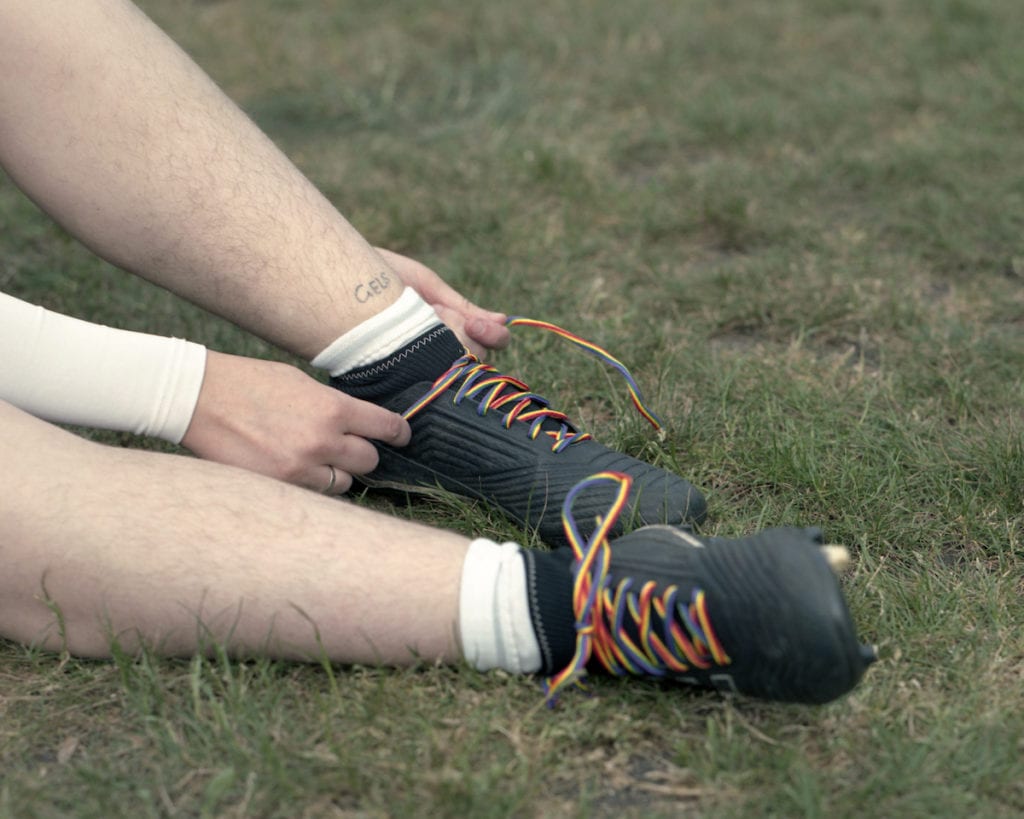
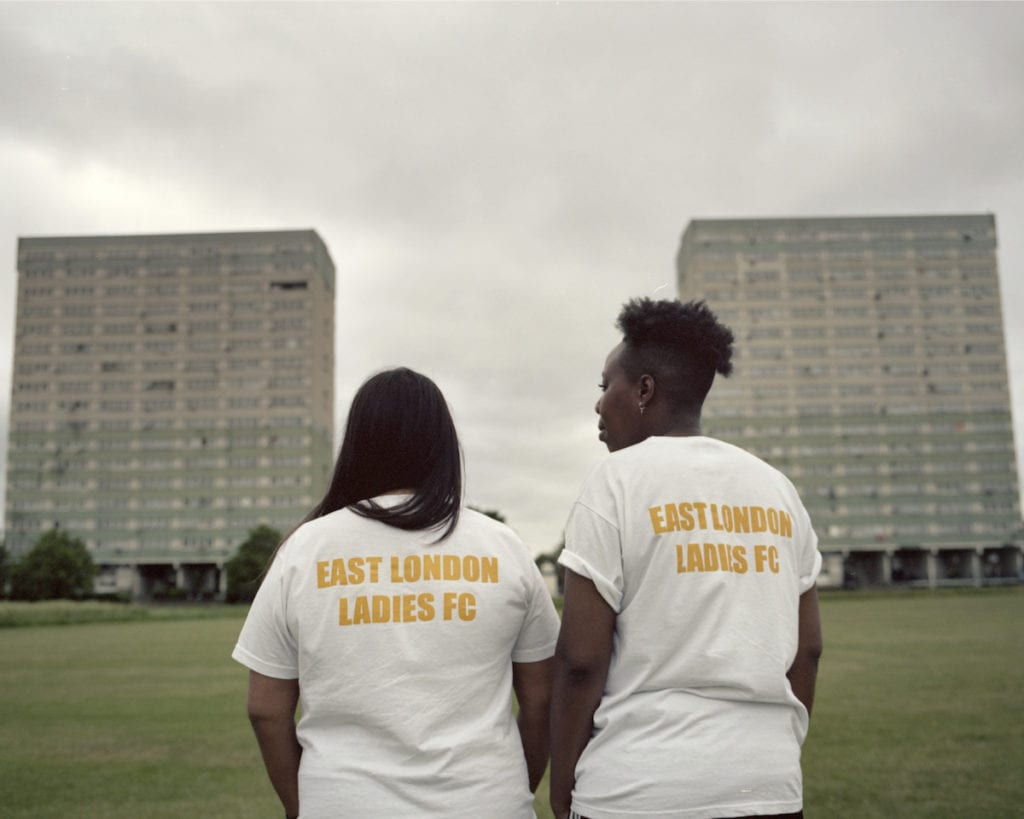
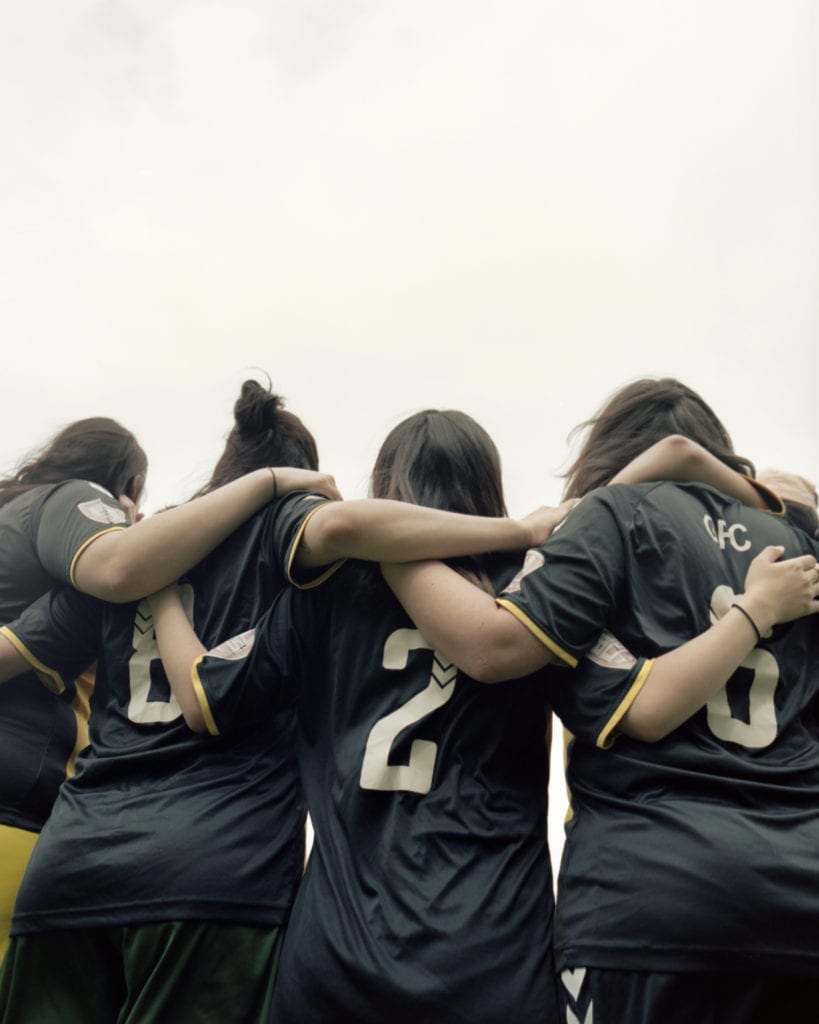
–
The adidas Breaking Barriers commission is organised by Studio 1854 in collaboration with adidas. For more information on sponsored content, visit 1854.studio
To hear about upcoming commission opportunities, register with 1854 Commisions.

